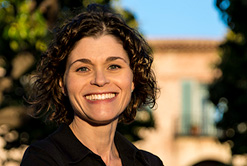Inefficiencies in the residency application system have been a problem for many years. While the AAMC and NRMP have made efforts to improve the process, including the move from the Scramble to SOAP a few years back, the lack of adequate slots for a large number of candidates leads to a tremendous amount of unnecessary stress and waste. With the introduction of virtual interviews, hoarding became a new problem.
To their credit, the AAMC is considering some reforms to the system. Allowing applicants to identify favored residency programs, called “preference signaling” through the supplemental ERAS, for example, has improved candidates’ abilities to get interviews at chosen programs. Additionally, some specialties – with AAMC’s support – have implemented a common interview invitation release date and a minimum response time for invitees. In the latter case, for example, most surgery programs provide candidates a minimum of 48 hours to accept or reject an invitation, such that applicants don’t need to sleep with one eye open, jumping to respond to an invitation to avoid the wait list. There has even been a consideration of capping the number of interviews each applicant can have to avoid interview hoarding.
I recommend reading this piece on proposed reforms to the system. Having gone through the stressful process myself, I wholly support strategies that would increase transparency and decrease unnecessary anxiety.

